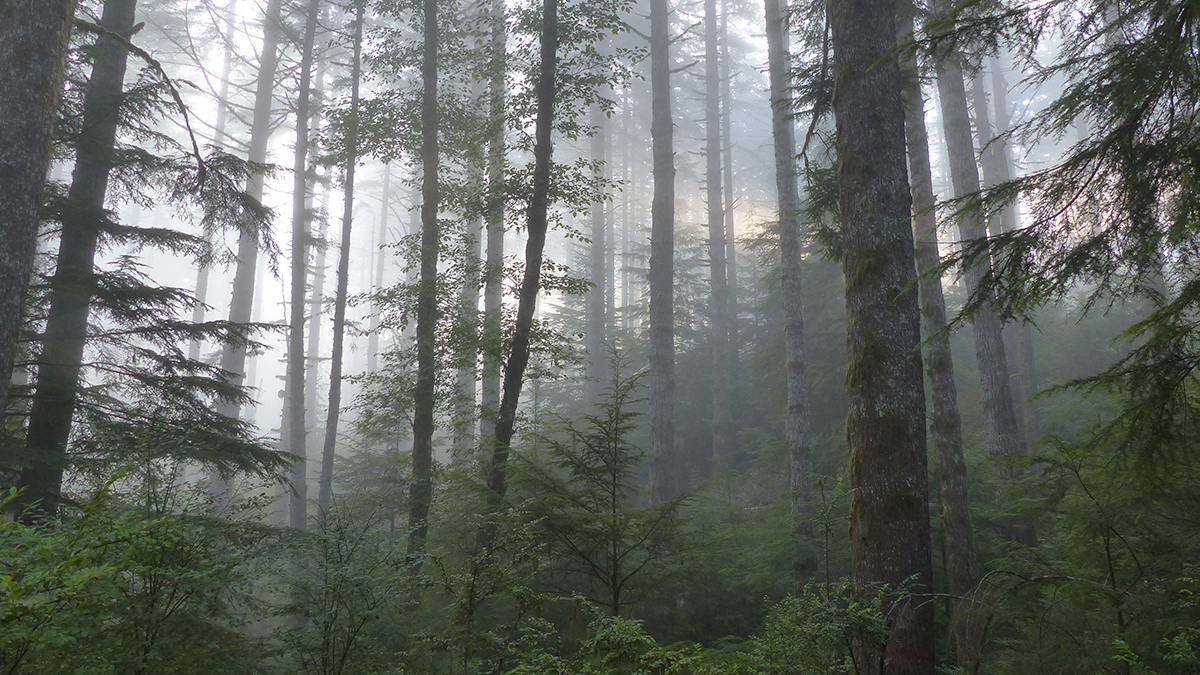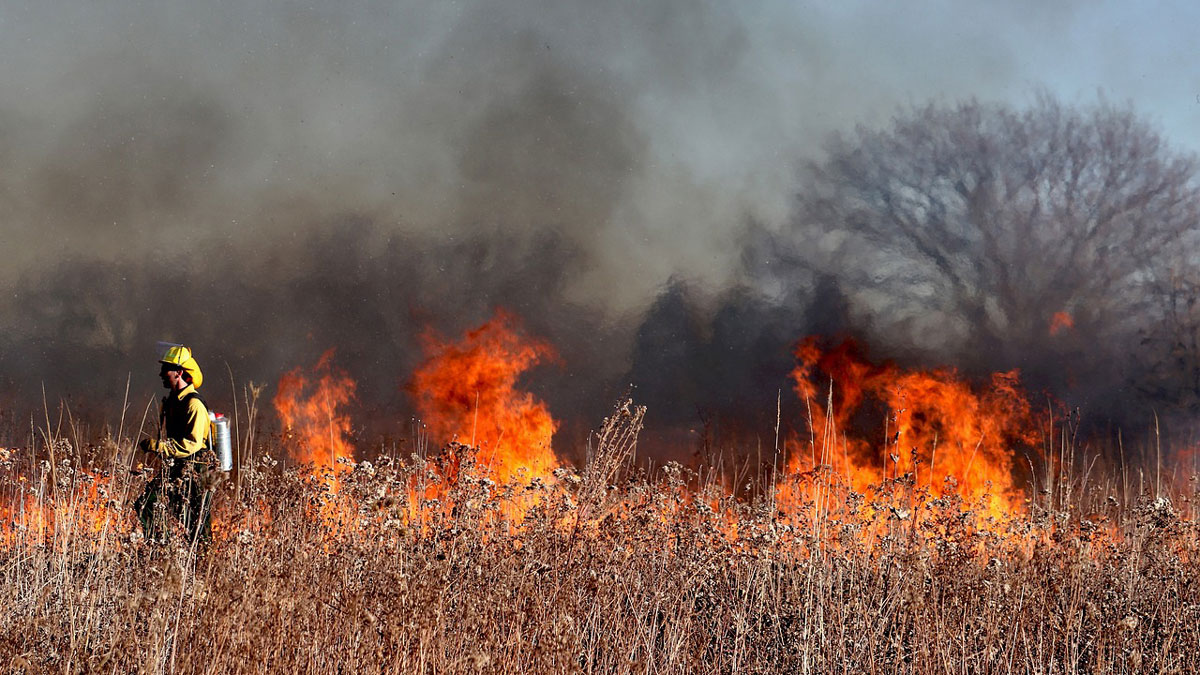A new study of nutrient levels in soil cores supports oral Indigenous history, informing future estuary restoration efforts.
Oregon
Old Forests in a New Climate
It’s usually cooler under a forest than outside the forest, but that natural temperature buffering didn’t make global warming any less strong during the last 45 years in an old-growth forest of Oregon.
The Best Way to Kill Trees to Create Habitat
Standing dead trees—or snags—shelter animals, store carbon, and cycle nutrients. A long-term monitoring study found that lopping off a tree’s top branches is a good way to turn it into a snag within about 20 years.
Spring Heat Waves Pack a Punch for Snowpacks in the Pacific Northwest
New research shows how the snowpack loss due to moderate springtime heat waves outweighed that of a record-shattering summer heat dome.
Climate Change Narrows the Window for Prescribed Fires
Longer, drier summers may mean fewer opportunities for firefighters to safely burn would-be wildfire fuel in the western United States.
Revolucionando la ciencia de los terremotos en Cascadia
Un nuevo centro reunirá a científicos de sismos para estudiar la zona de subducción de Cascadia y aclarar los peligros sísmicos.
Shaking Up Earthquake Science in Cascadia
A new center will bring together earthquake scientists to study the Cascadia Subduction Zone and clarify seismic hazards.
Dating the World’s Tallest Trees
Scientists analyzed more than 1.2 million trees to assemble chronologies of annually dated rings, which will inform fields ranging from climate science to seismology.
Baked Contacts Focus a Lens on Ancient Lava Flows
Two studies, conducted 40 years apart, show how combining field observations and thermal modeling can reconstruct the history of massive lava flows and how they altered the surrounding landscape.
Far-Flung Forces Caused the 2021 Pacific Northwest Heat Wave
Air from thousands of kilometers away spiraled down to drape the Pacific Northwest in blistering heat.










